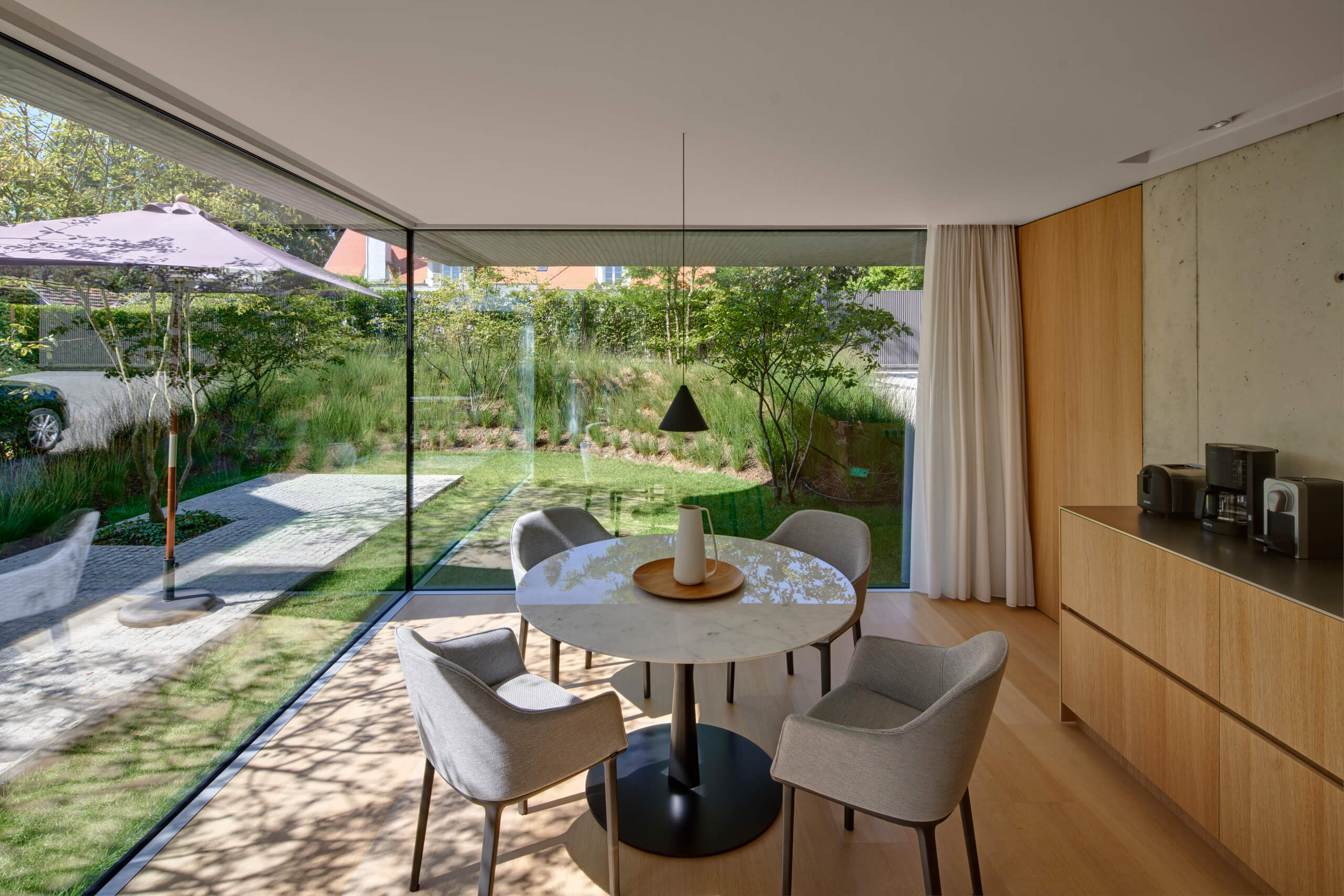April 2024
Reference
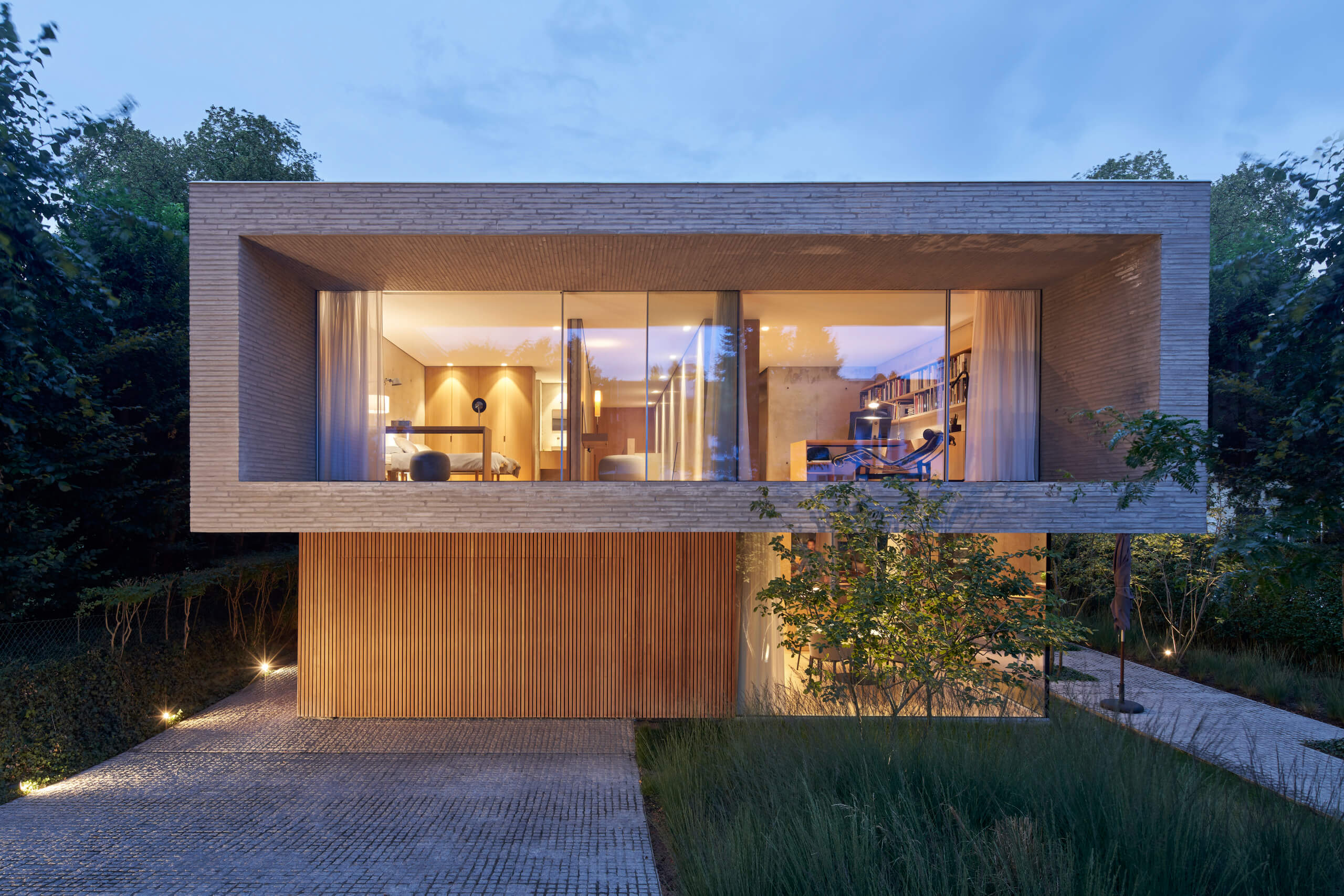
The Aviation 6 house features modern architecture: the accuracy of proportions replaces any form of decoration; the masonry facades are pierced with panoramic windows that underlie the horizontality of the composition. The flat site is located one metre below the road level. As a result, the height of the building does not exceed five metres above street level and its visual impact is reduced.
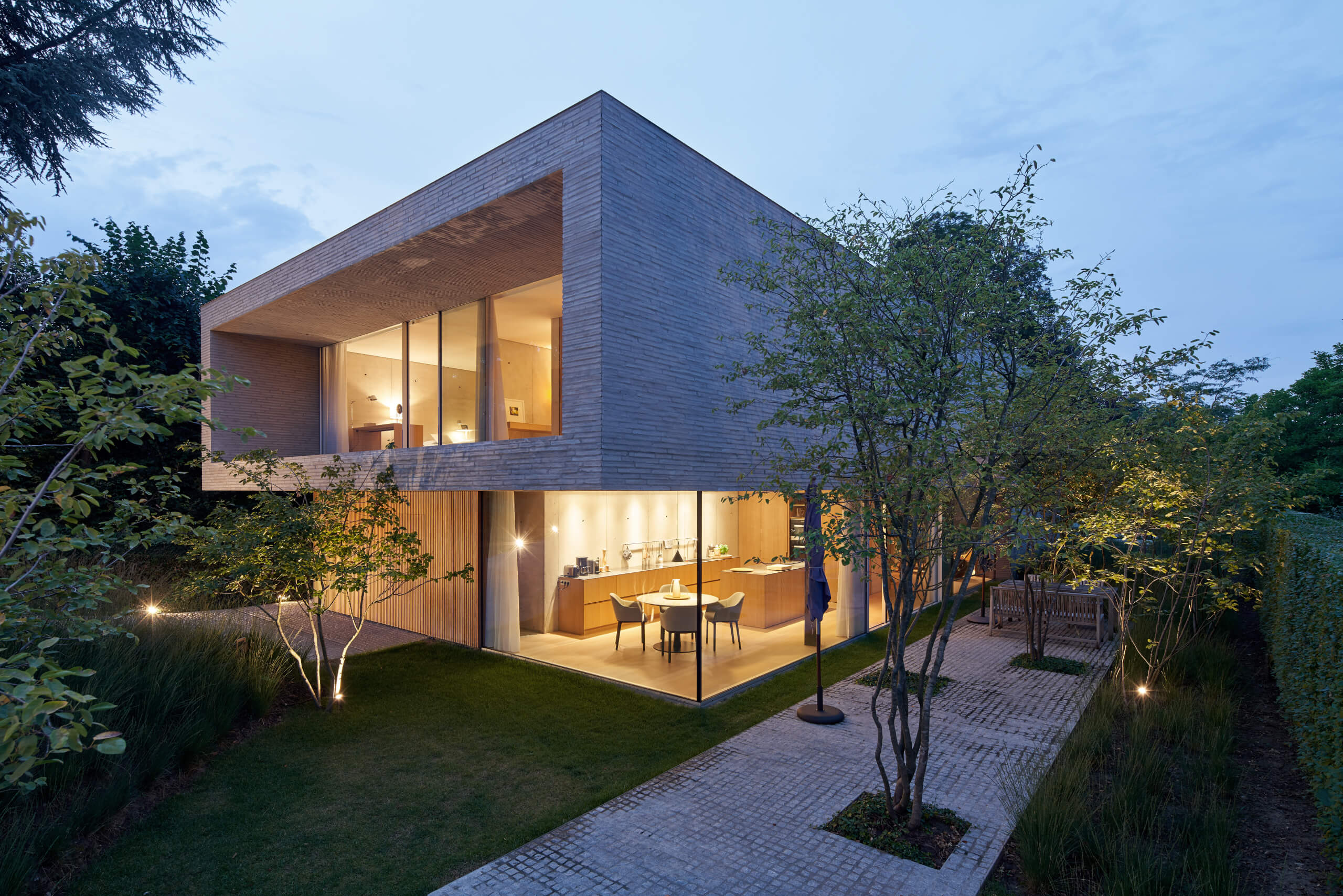
The abundant canopy of large trees in the courtyard crowns the composition – vegetation prevails over the building. The location, which is not very favourable at first sight, has been used to create different gardens that are sometimes sunny and sometimes shaded. Different landscaped areas, some open, others contained, allow you to enjoy the garden at any time of the day.
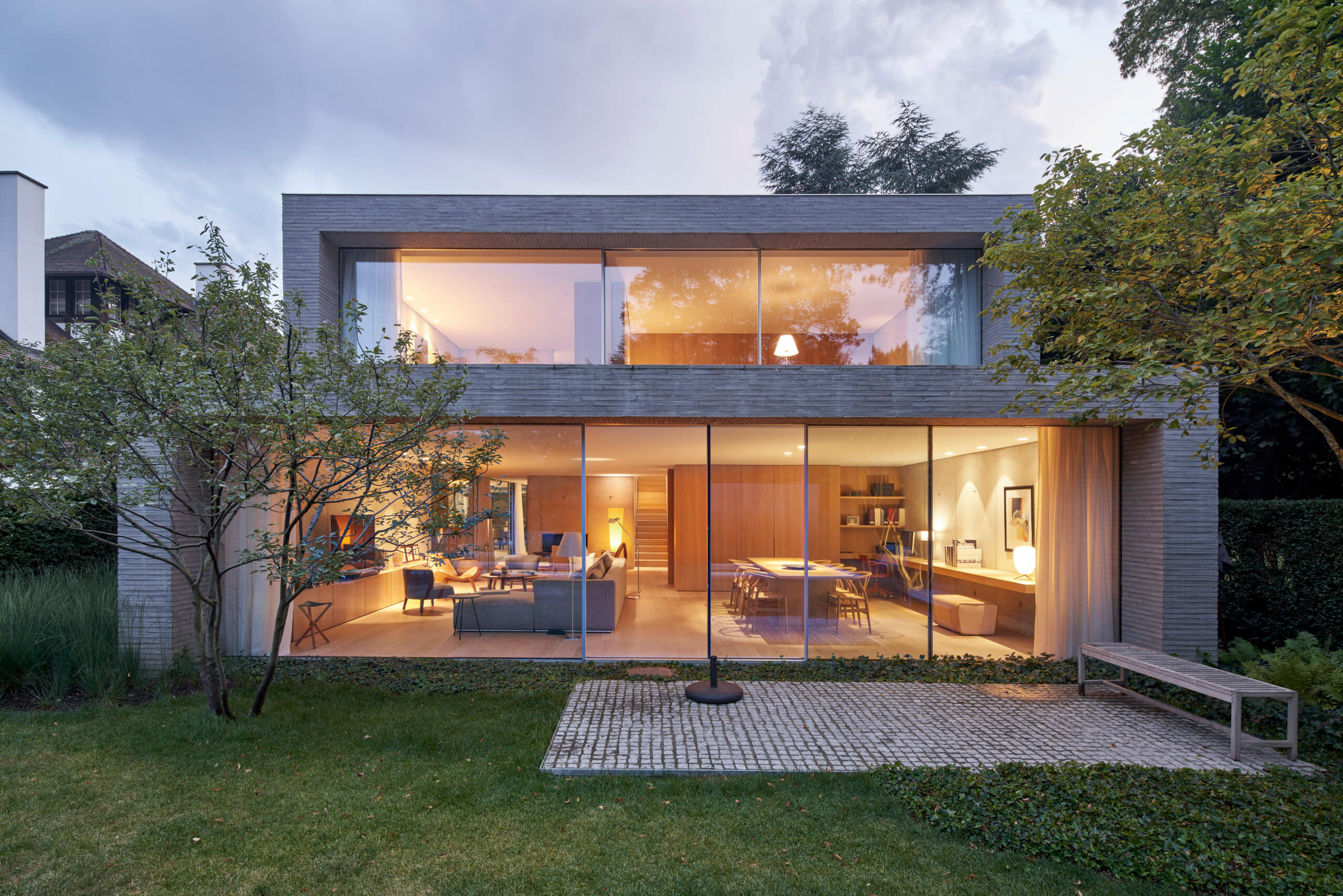
The large jambs of the panoramic windows are matched on the inside by exposed concrete walls of the same colour. Numerous elements made of brushed oak wood complete the composition. The materials have been selected and implemented to age well – the patina replaces ageing.
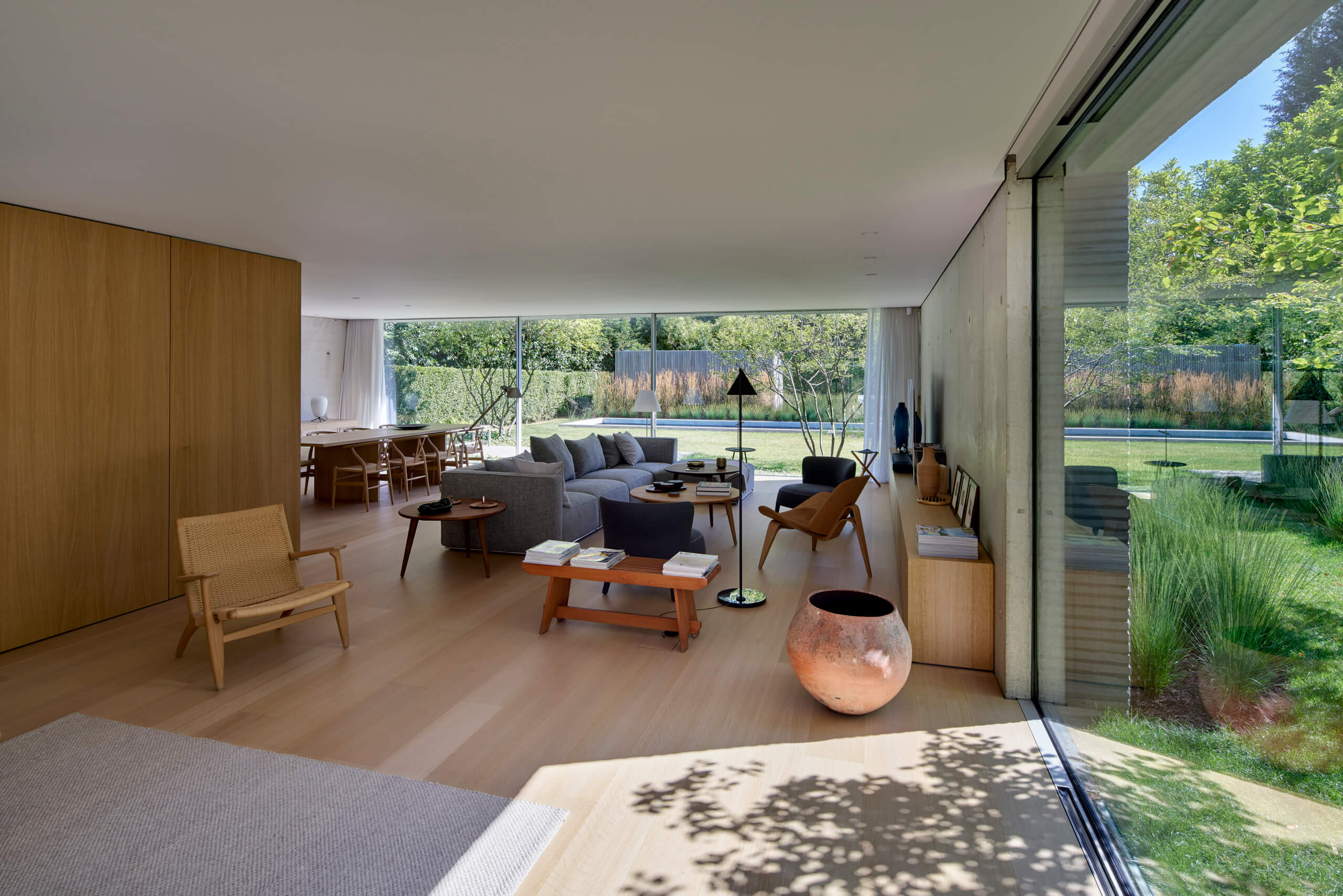
The street facade is set back by some 10 metres on the ground floor, and by 8 metres on the first floor, which has an overhang to provide shade for the living spaces on the ground floor. This overhang extends inside, as if to allow the setting sun to lift the structure to illuminate the house. The two eastern side facades rest firmly on the ground to form a frame for the landscape.
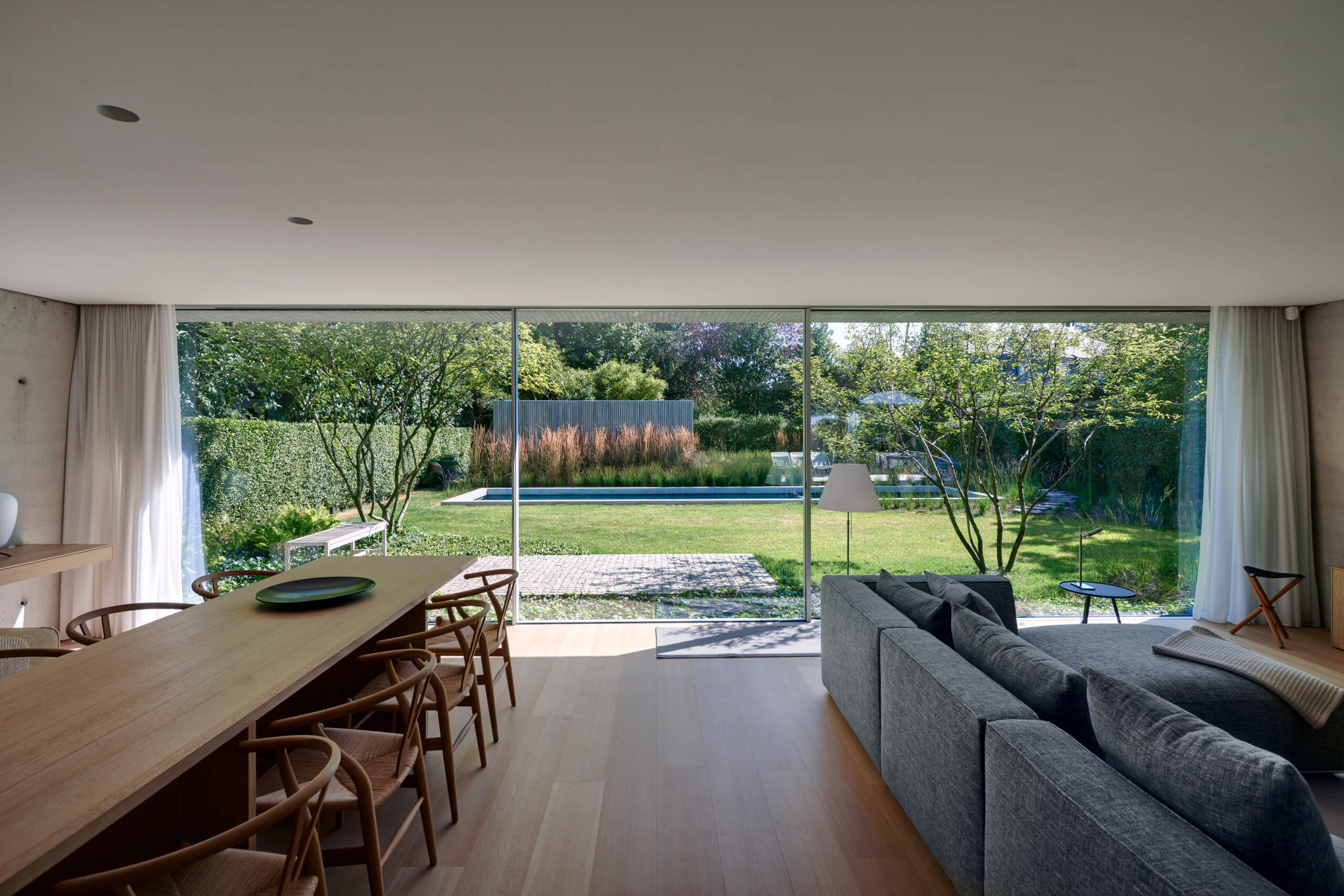
The facade bricks made of grey clay are long and thin; the mortar in the same colour provides the desired mass. Particular care has been taken to integrate the technical elements. The frames of the exterior joinery are integrated into the shell in order to strongly assert the contrast between the mass of the shell and the delicacy of the windows, whose frames are no more than two centimetres wide.
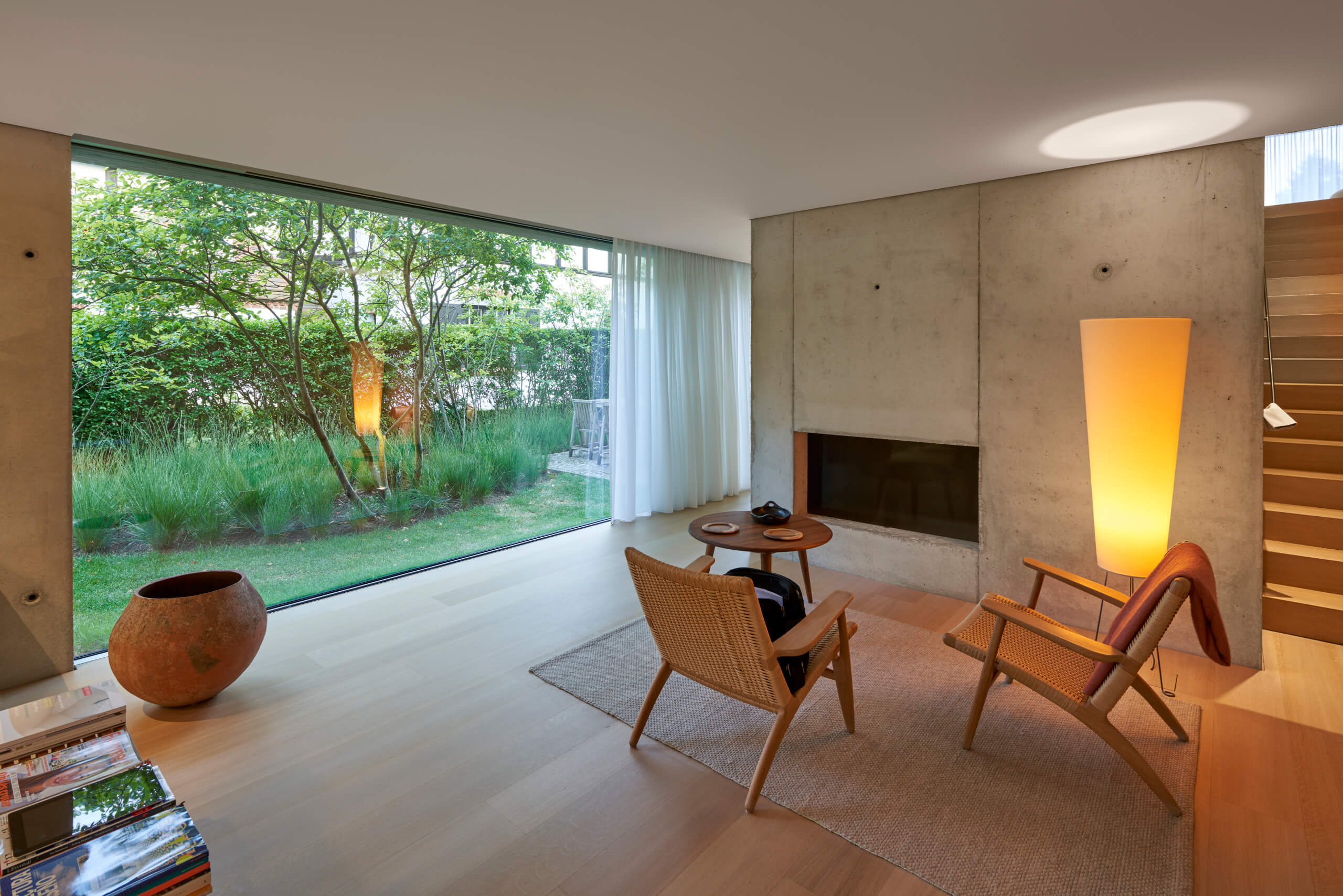
The interior joinery is designed to form compositions of wood where each joint has its function. Pivot doors are level with the joinery when closed, and give the appearance of “leaves in space” when opened. No handles are installed – instead, they are extruded into the material. Switches are the only protrusions: small four-millimetre-high cylinders that only need to be touched to be activated.
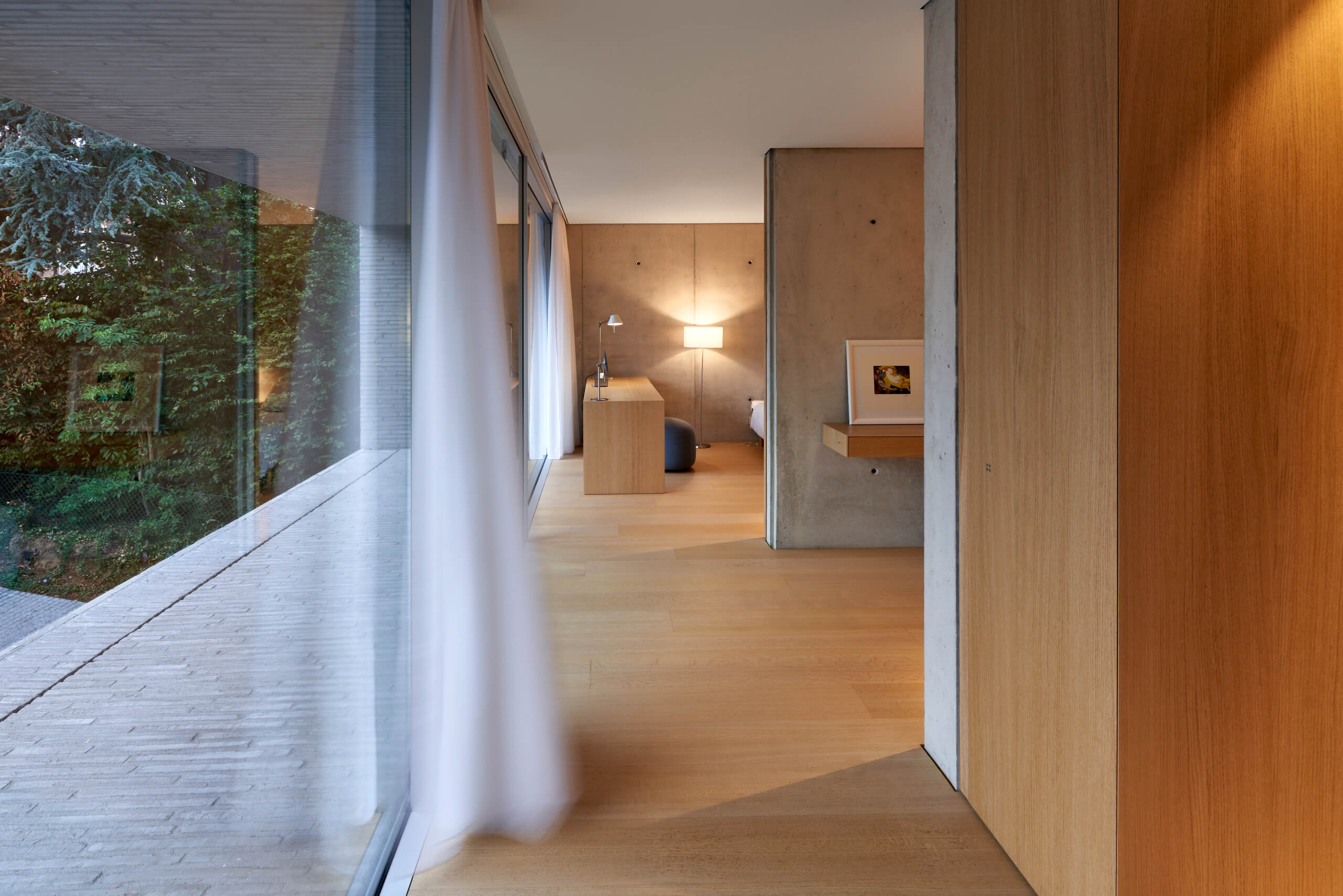
And, as there is no limit to architecture, the water supply has also been rethought. From the exclusive design of the tap to the implementation down to the smallest detail by CEA, it was a matter of applying the same constant motto – getting rid of the superfluous and keeping only the essential.
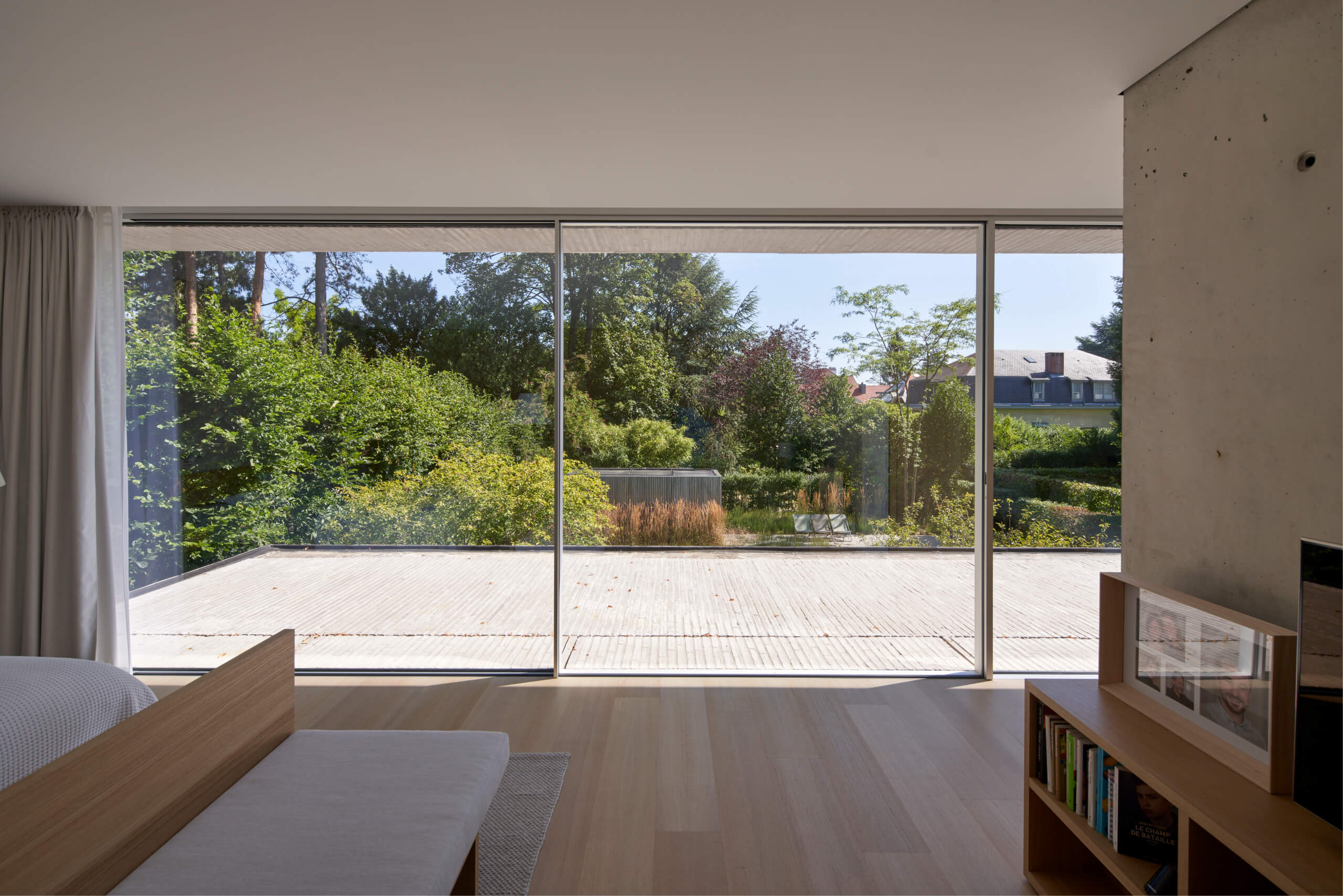
The coming together of materials was dictated by the dominance of the strongest over the weakest: concrete runs through the wood floor – which explains the absence of skirting boards – and the concrete ceiling prevails over the wood of the joinery. A nine-millimetre-wide shadow gap articulates the components.
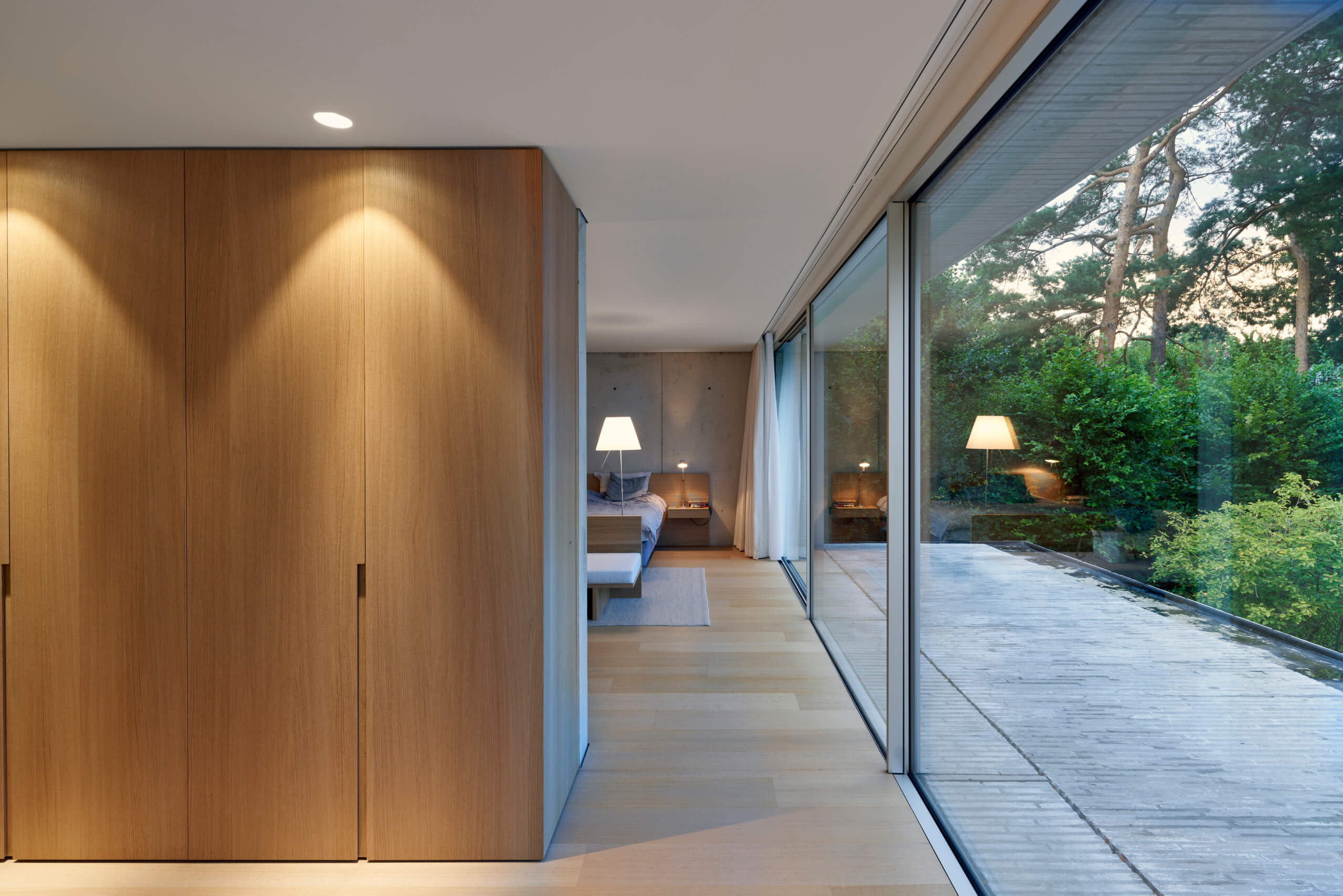
The outdoor pavement, as well as the garage floor and showers, is made using small Portuguese porphyry paving stones. The roof profile made from plain anodised aluminium features a drip edge that is tangent to the viewing angle and almost invisible.
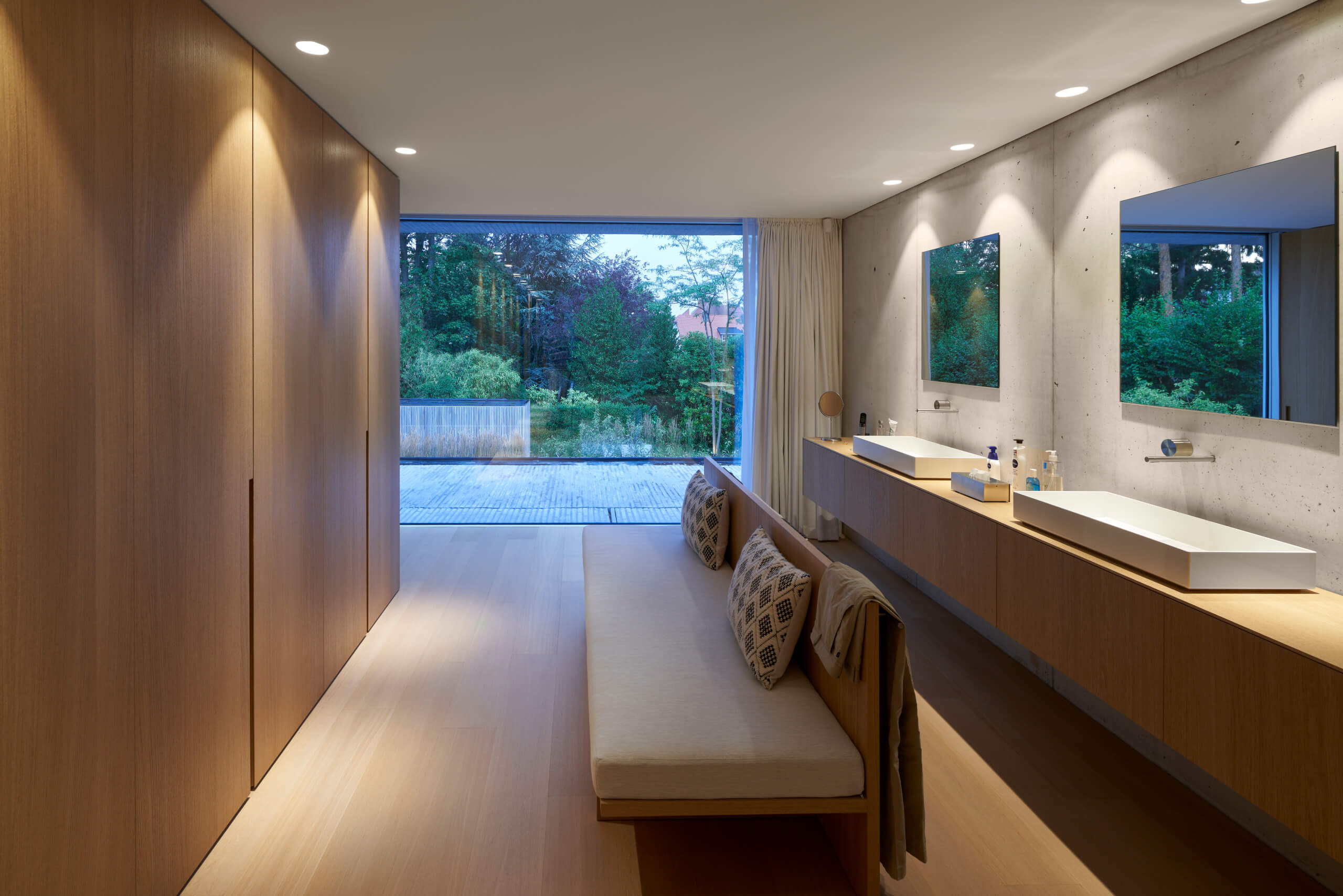
The living spaces are on the ground floor. The living room has a nine-metre-wide bay window that opens onto the garden. No columns obstruct this opening – only the two supports of the sliding door punctuate the window.
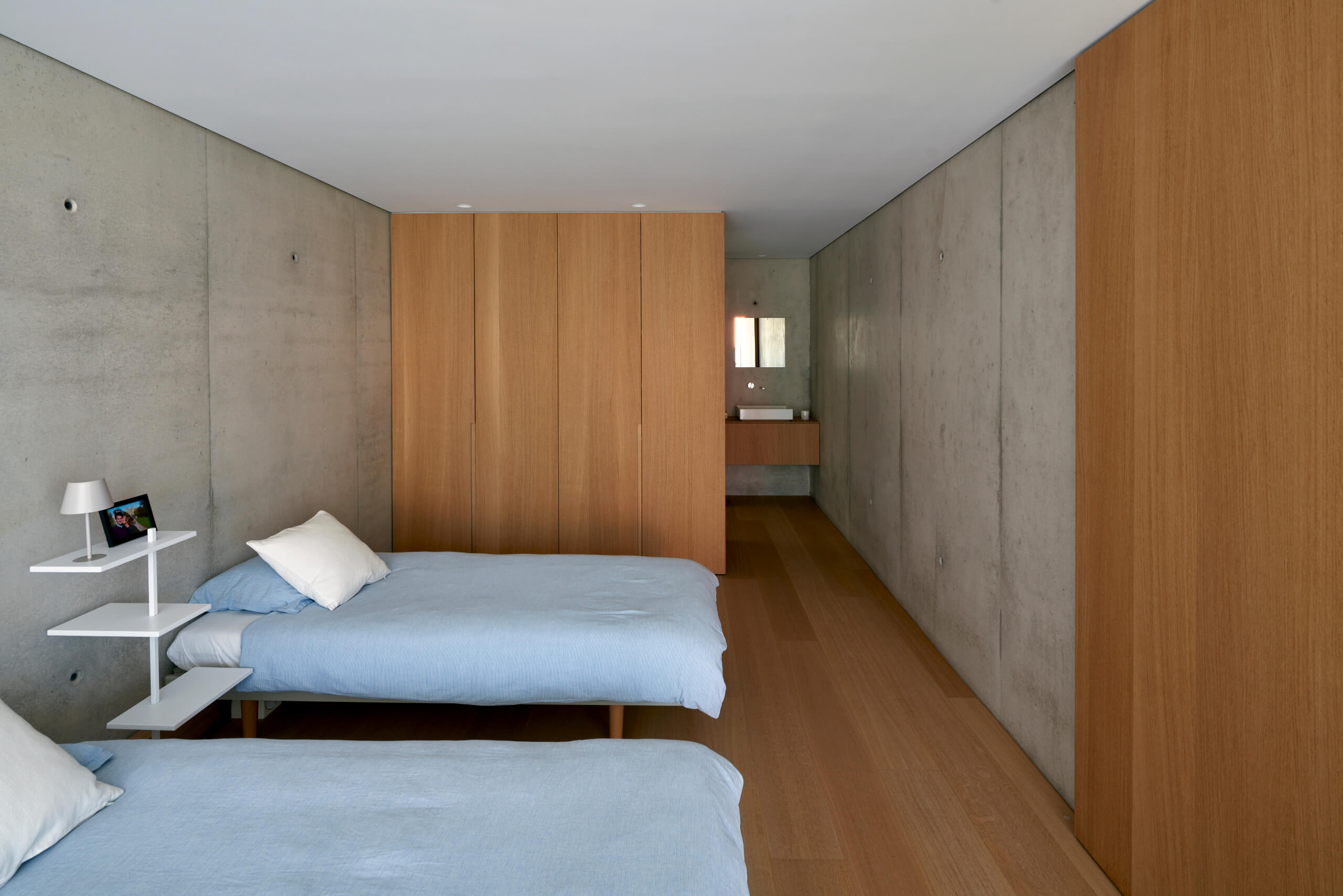
On the western side, which is widely open to the street garden, the kitchen enjoys an intimate atmosphere shaded by flowers and leaves of juneberries whose delicate trunks adorn the lawn and terraces paved with porphyry.
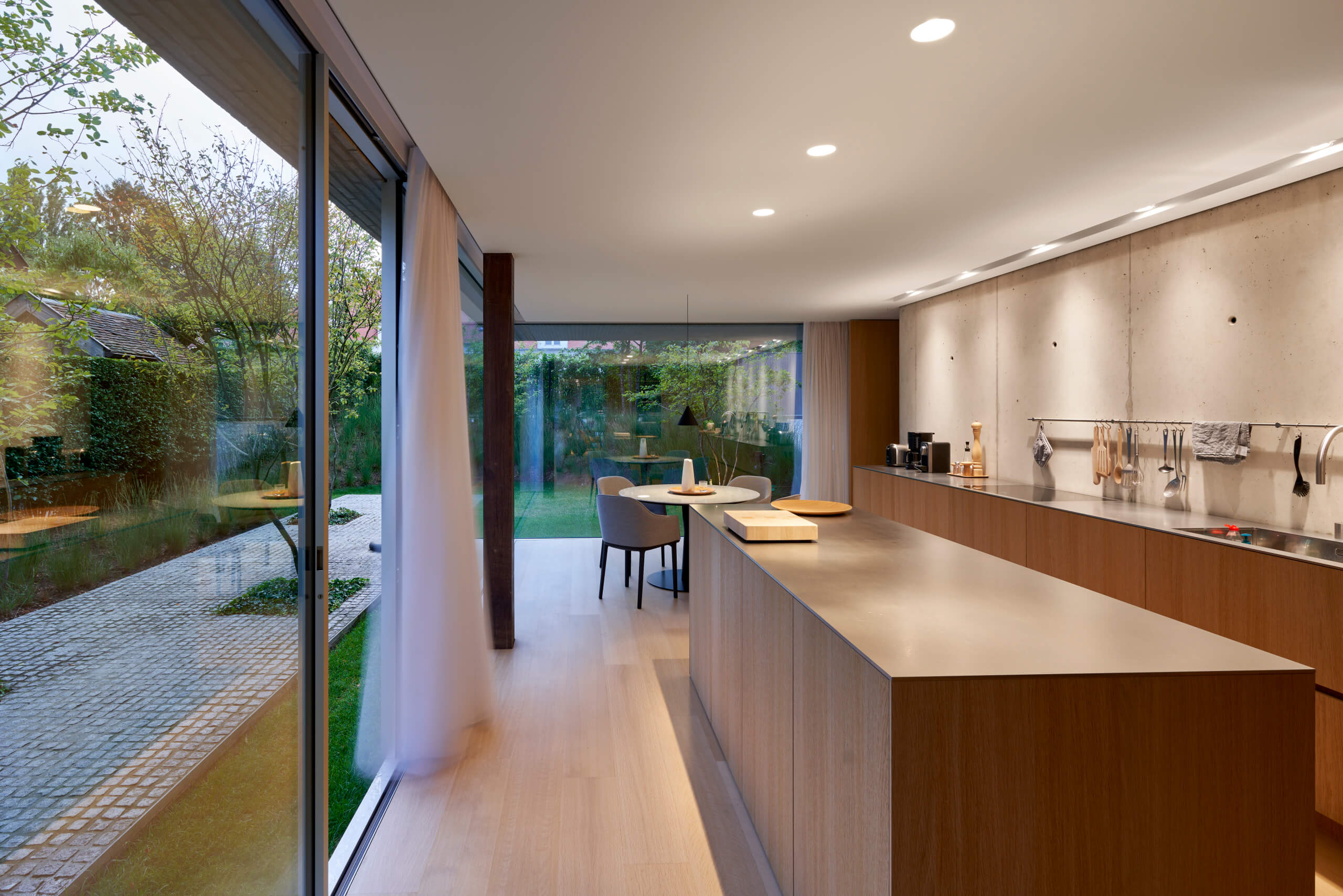
The floor plan is flexible and the spaces open. However, intimacy is still ensured by the open fireplace between the scullery and the living room whose hearth is devoid of sharp angles and evokes a feeling of infinity so as not to hinder the dancing of the flames.
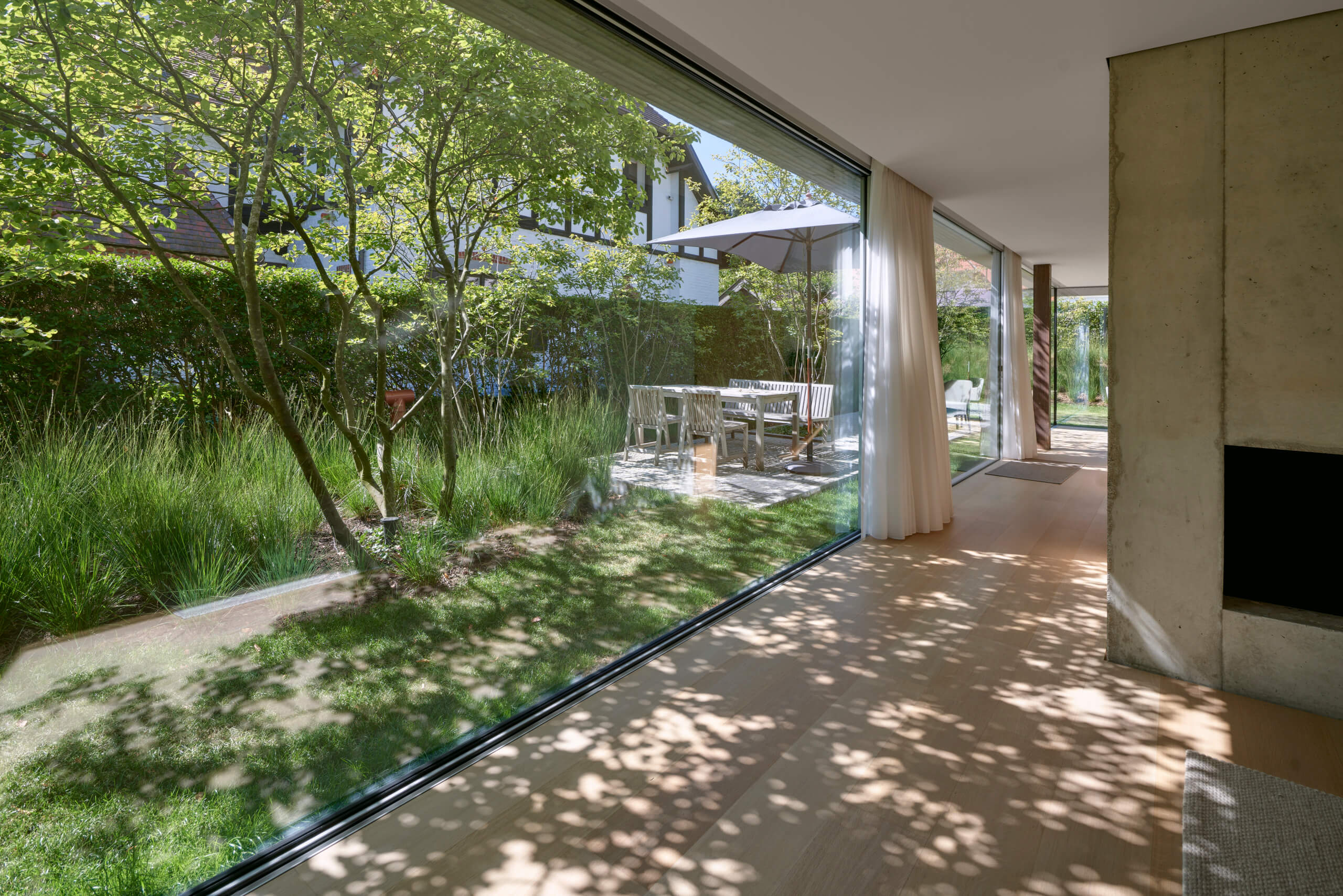
Installed between two concrete walls that define a double contained volume, the staircase leads to the first floor and to one of the two perspectives that cross the floor. Here again, only the three materials of concrete, wood and glass – and therefore light – shape the architectural walk.
